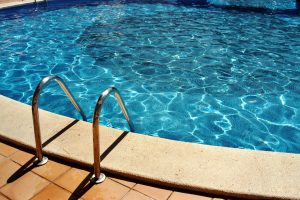Atlanta Pools, Premises Liability, and Attractive Nuisances
 CBS Atlanta News recently reported on the tragedy of a child drowned in an apartment complex pool. The child, evading the attention of his mother, began swimming in the apartment complex’s pool by himself and eventually was pulled out by a stranger after being under the water for an unknown amount of time. These types of cases, in which a child is drawn to a man-made hazard such as a pool or machinery, are so common that they have their own name – attractive nuisances.
CBS Atlanta News recently reported on the tragedy of a child drowned in an apartment complex pool. The child, evading the attention of his mother, began swimming in the apartment complex’s pool by himself and eventually was pulled out by a stranger after being under the water for an unknown amount of time. These types of cases, in which a child is drawn to a man-made hazard such as a pool or machinery, are so common that they have their own name – attractive nuisances.
Attractive to Children
The attractive nuisance doctrine is a legal theory that holds property owners liable under a theory of premises liability to protect children from their own curiosity. Property owners have a duty of care to trespassing children. If they do not take precautions to protect children from hurting themselves on their property they may be held liable for the death or serious injury of the trespassing child.
Attractive nuisances are common and varied. Pools are perhaps the most common example of an attractive nuisance. Construction sites with open pits, unsecured machinery, and other dangerous equipment are also generally found to be attractive nuisances. Similarly, mine shafts, railroads, man-made ponds and lakes, and play areas such as playground equipment and jungle gyms are all considered attractive nuisances under Georgia law.
There is a question of whether or not natural hazards such as rivers, naturally occurring lakes and ponds, and holes constitute attractive nuisances. As the law stands now, it is not a settled issue.
Property Owners Beware
Under Georgia law, a landowner may be liable for physical harm caused by an attractive nuisance on his or her land if:
- The landowner knows or should know that children are likely to trespass on the property
- The attractive nuisance on the property has the potential to cause death or serious bodily injury to a child
- The children injured are too young or immature to appreciate and understand the risks presented by the attractive nuisance
- The utility of maintaining the attractive nuisance or the cost required to remedy the condition is minimal compared to the risk to the children
- The landowner fails to take reasonable measures to eliminate the danger posed by the condition.
Reasonable Measures to Eliminate Danger
Many property owners may be wondering what reasonable measures they can take to eliminate the danger posed by the attractive nuisance. The answer is not entirely clear. Attractive nuisance cases are very dependent on the facts of the case. However, there are certain steps that most courts agree on that property owners should take to minimize the danger.
Fencing off an attractive nuisance is almost a universal way to prevent children from injuring themselves. It can both obstruct the view of the attractive nuisance and physically prevent a child from trespassing. Posting warning signs may also be effective, but only for children over a certain age. Locking up tools and machinery and gates that may lead to pools is also an effective form of preventing child injury.
Attractive Nuisance Cases are Complex and Difficult to Win
Attractive nuisance cases are very fact specific cases. What may be an attractive nuisance to one court may not be one to another. Therefore it is important to have an attorney representing you who is familiar with premises liability law. The Atlanta law firm of Cash, Krugler & Fredericks LLC has years of experience representing clients who have injured themselves due to the negligence of landowners. Contact them today at (404) 659-1710 or visit them online.
See Related Posts:
Lead Paint in Premises Liability Law
Premises Liability: Fighting to Make It Right

